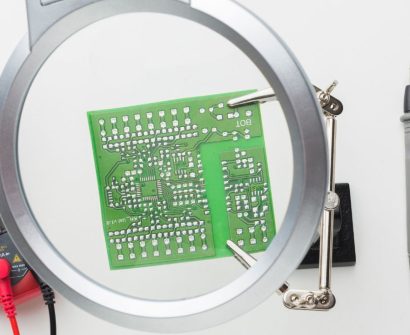
Introduction: Integrated circuits (ICs) have transformed the modern world by driving technological advancements in everything from smartphones to medical devices. These minuscule chips, often no larger than a fingernail, pack immense power and functionality, thanks to a complex design and manufacturing process. Have you ever wondered how they come to life? The IC design flow is an intricate journey involving deep technical expertise in both hardware and software. This blog delves into the fundamental aspects of the IC design process, providing insights for both newcomers and experienced engineers. Buckle up as we embark on a fascinating exploration of the steps involved in bringing an IC from concept to reality.
System on Chip (SoC): Benefits and Key Features
A System on Chip (SoC) integrates multiple system components into a single chip, optimizing performance, size, and power consumption. Some of the key advantages of SoC include:
- Compact Size: The size of a chip is significantly smaller than traditional PCB boards, making SoCs ideal for portable devices.
- Reduced Power Consumption: Fewer components, input/output interfaces, and passive elements help minimize power usage.
- High Performance: SoCs integrate various functions, leading to improved processing power and efficiency.
- Lower System Cost: Consolidating components into a single chip lowers the overall production cost compared to systems with separate chips.
System in Package (SiP): Enhancing Flexibility
While SoC focuses on compact integration, System in Package (SiP) is another approach that offers different benefits. SiP involves packaging multiple chips with different technologies into a single module. Advantages of SiP include:
- Lower Development Costs: SiP typically reduces costs due to simpler design and testing processes.
- Faster Turnaround: With shorter development times, SiP accelerates time-to-market.
- Multi-Technology Integration: SiP allows the use of different technology chips within the same package.
- Improved Yield: As smaller chips are easier to manufacture, the overall yield improves.
The IC Design Flow: A Step-by-Step Process
Designing an IC is an intricate task, requiring careful planning and execution at every step to ensure first-pass silicon success. Given the high development costs of ICs and SoCs, manufacturers aim for flawless designs that meet power, performance, area, schedule (PPAS), and cost targets. The following is a typical IC design flow:
- Specification & Requirements Gathering: The design process begins with defining the chip’s specifications based on the desired functionalities and target market requirements.
- Architecture Design: This step involves creating the high-level architecture, defining the blocks and how they will interact.
- RTL Design & Coding: Register Transfer Level (RTL) coding translates the high-level architecture into actual logic design using hardware description languages like Verilog or VHDL.
- Synthesis: The RTL code is then synthesized to generate a gate-level netlist, which is a logical representation of the circuit.
- Physical Design: This step converts the netlist into a physical layout, mapping the design onto silicon. It involves tasks like placement, routing, and clock-tree synthesis.
- Verification & Validation: Before manufacturing, the design must undergo rigorous verification, including functional testing and timing analysis, to ensure the chip will work as intended.
- Fabrication: Once verified, the design is sent to the foundry for fabrication.
- Testing & Packaging: After the chip is manufactured, it undergoes post-silicon validation, where engineers test the chip for faults and performance metrics before packaging it for shipment.
Conclusion
The journey of designing and manufacturing an IC is complex, requiring meticulous attention to detail and collaboration across multiple teams. From specification to fabrication, every step plays a vital role in ensuring that the final product meets the power, performance, and cost requirements. Whether you’re delving into SoC, SiP, or general IC design, understanding the flow is essential for success in this competitive and high-stakes field.
This guide offers a glimpse into the intricate world of IC design, highlighting the importance of a systematic approach to chip development.







